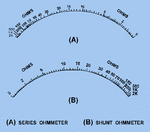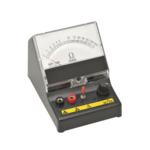tahir4awan
Full Member level 4
As we know the difference between series and shunt ohmmeter, but I have a confusion. I have searched, what is the use of series and shunt ohmmeter? Mostly analog multimeter we use today are series type ohmmeter. But why not shunt ohmmeter. I have searched thai question, and what I have found that shunt ohmmeter are used for low resistance from 5 to 400 ohms. Which is strange. I have seen meter with such scale. In a website, was written this and in the same website is a picture of series and shunt ohmmeter scales with same ranges but opposite deflection.
My question is, what is really the use of shunt ohmmeter? Are series and shunt measuring range same but with opposite deflection?
Thanks in advance.
My question is, what is really the use of shunt ohmmeter? Are series and shunt measuring range same but with opposite deflection?
Thanks in advance.


